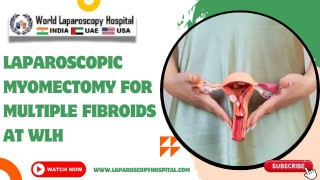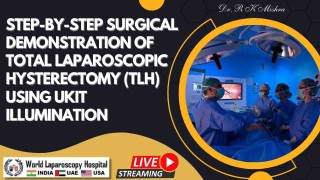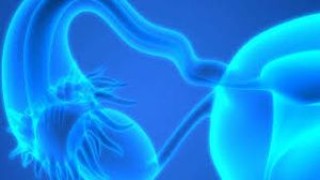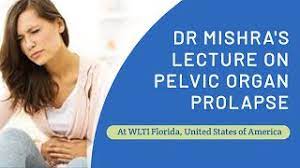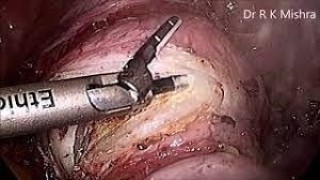Laparoscopic Oophorectomy in Estrogen Receptor-Positive Breast Cancer
Add to
Share
3,438 views
Report
2 years ago
Description
Introduction: Breast cancer is one of the most prevalent malignancies globally, with estrogen receptor-positive (ER+) subtype being a common variant. ER+ breast cancers rely on estrogen signaling for growth, making hormonal manipulation a cornerstone of treatment. One approach to curbing estrogen production is through laparoscopic oophorectomy, a minimally invasive procedure that removes the ovaries. This article delves into the significance, procedure, benefits, and considerations surrounding laparoscopic oophorectomy in ER+ breast cancer patients. Significance of ER+ Breast Cancer: ER+ breast cancers constitute a substantial proportion of diagnosed cases. The binding of estrogen to its receptor promotes cell proliferation, making ER+ tumors particularly responsive to hormonal therapies. Targeting the source of estrogen production, the ovaries, can significantly impact disease progression and recurrence. Laparoscopic Oophorectomy: Procedure and Rationale: Laparoscopic oophorectomy involves the removal of ovaries through small incisions, utilizing specialized tools and a camera-equipped scope. This technique offers several advantages, including reduced postoperative pain, shorter hospital stays, quicker recovery, and improved cosmetic outcomes compared to traditional open surgery. By removing the ovaries, a key source of estrogen production is eliminated, leading to decreased estrogen levels in the body. Benefits and Considerations: Enhanced Hormonal Control: Oophorectomy contributes to a significant reduction in estrogen levels, aiding in halting or slowing the growth of ER+ tumors. This complements other hormonal therapies like aromatase inhibitors and selective estrogen receptor modulators (SERMs). Reduced Recurrence Risk: Lower estrogen levels post-oophorectomy reduce the risk of ER+ breast cancer recurrence, offering a potential advantage in long-term disease management. Genetic Considerations: Laparoscopic oophorectomy is particularly relevant for patients with BRCA1/2 mutations, as these mutations elevate the risk of both breast and ovarian cancers. The procedure serves a dual purpose in such cases by mitigating the risk of both cancers. Impact on Fertility and Menopause: Oophorectomy induces menopause, impacting fertility and quality of life. Preoperative counseling is essential to address concerns and explore fertility preservation options. Patient Selection: Oophorectomy might not be suitable for all ER+ breast cancer patients. Factors such as age, disease stage, overall health, and patient preferences influence the decision-making process. Postoperative Management and Monitoring: Post-surgery, patients require close monitoring for menopausal symptoms, bone health, and potential cardiovascular effects. Hormone replacement therapy may be considered, balancing the benefits against the risk of promoting tumor growth. Conclusion: Laparoscopic oophorectomy plays a pivotal role in managing ER+ breast cancer, offering a powerful strategy to control estrogen levels and subsequently, tumor growth. However, its implementation necessitates careful patient selection, comprehensive counseling, and consideration of long-term implications. Collaborative decision-making involving oncologists, surgeons, and patients is essential to optimize treatment outcomes and ensure holistic care for individuals with ER+ breast cancer. Long-Term Implications and Future Directions: Survival Outcomes: Studies investigating the impact of laparoscopic oophorectomy on survival outcomes in ER+ breast cancer patients have demonstrated promising results. Reductions in recurrence rates and prolonged disease-free survival have been reported. However, long-term data are still evolving, necessitating continued research to solidify the procedure's role in improving overall survival. Combined Therapies: Laparoscopic oophorectomy is often integrated into a comprehensive treatment approach. Combining oophorectomy with other modalities like chemotherapy, radiation therapy, and targeted therapies can enhance treatment efficacy and provide synergistic benefits, particularly in aggressive or advanced ER+ breast cancers. Personalized Medicine: The future of laparoscopic oophorectomy in ER+ breast cancer lies in personalized medicine approaches. Genetic profiling of tumors and patients can aid in tailoring treatment strategies. Identifying patients who would derive the most benefit from oophorectomy, based on genetic and molecular markers, could optimize outcomes and minimize unnecessary procedures for those unlikely to benefit. Fertility Preservation: Preserving fertility is a concern for many young women diagnosed with ER+ breast cancer. Advances in assisted reproductive technologies, such as egg or embryo freezing, provide options for fertility preservation before undergoing oophorectomy. Collaborative efforts between oncologists and fertility specialists are vital to address this aspect comprehensively. Psychosocial and Quality of Life Considerations: The psychosocial impact of undergoing oophorectomy, particularly in inducing premature menopause, should not be overlooked. Addressing emotional, psychological, and quality of life aspects through support groups, counseling, and interventions can mitigate the challenges posed by hormonal changes. Precision Monitoring: As laparoscopic oophorectomy becomes more integrated into ER+ breast cancer management, precision monitoring becomes essential. Regular assessment of hormonal levels, disease status, and potential side effects is crucial for adjusting treatment strategies as needed.
Similar Videos


